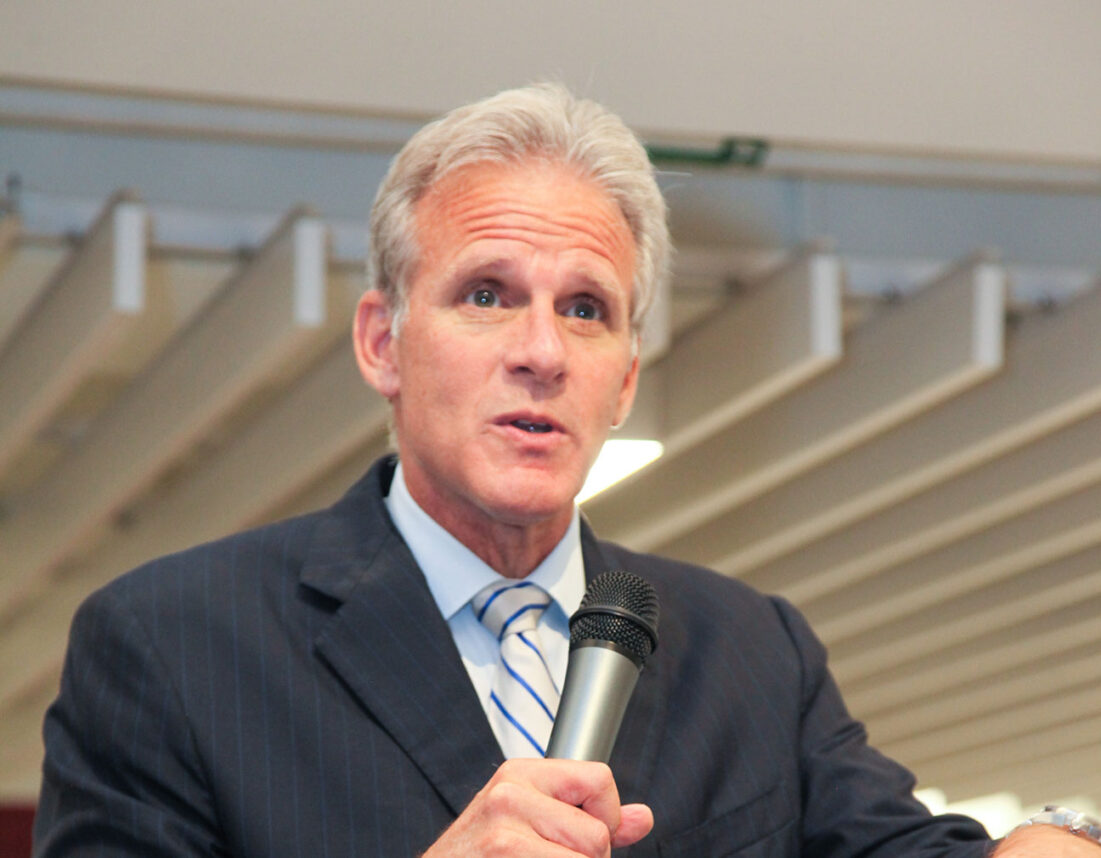A 1998 article about Chicago collector Stephen Durschslag’s haggadah collection set the number of different haggadot on his shelves at 4,500, increasing almost daily.
It’s probably impossible to know how many haggadot exist, but it’s obvious that for every Jew, there should be a haggadah that fits like a glove.
In Every Generation —
Escape and Survival
One of the few new haggadot this spring is a fascinating reminder of the parallels between our ancient and more recent past. A Survivor’s Haggadah (Jewish Publication Society, 2000) is a facsimile of a work written in 1945-46 by Lithuanian survivor/ teacher/ writer Yosef Dov Sheinson. Used during the first post-liberation Passover seder in Munich, in April 1946, the original booklet was found by editor Saul Touster of Brandeis among his father’s papers and serves as the source for this edition.
Professor Touster’s introduction and commentary are revealing and jarring, in keeping with the powerful words by Sheinson and the woodcuts by another survivor, Mikls Adler. To read of the DP camps and initial Allied political insensitivities is to be angered; to read Sheinson’s text indicting factionalism among the Jews within the camps (as among the Israelites in the desert) is to be bemused; to read of the roles played by Rabbi Abraham J. Klausner and other U.S. chaplains in “organizing” for the Saved Remnant is to be inspired; to trace through word and woodcut these dual stories of deliverance is to be moved beyond words.
Contemporary User-
Friendly Haggadot
A Different Night: The Family Participation Haggadah by Noam Zion and David Dishon (Shalom Hartman Institute, 1997) is especially designed to let you plan seder length to what your group can handle. Suggested thought questions, quotations from myriad sources, cartoons, and artwork from more formal sources are included, and the book is guaranteed to involve everyone.
Rabbi Mordecai M. Kaplan, with rabbis Eugene Kohn and Ira Eisenstein, edited a breakthrough haggadah, The New Haggadah (Behrman House) for the Jewish Reconstructionist Foundation in 1941. A 1999 Behrman House revision, prepared by an editorial committee of outstanding young rabbis and retitled The New American Haggadah, includes songs by Debbie Friedman and references to civil rights and other timely issues — and you’ll be able to read the typeface.
Among other fine and friendly table haggadot are the abridged Family Passover Haggadah by Elie M. Gindi (SPI Books), a real labor of love that incorporates illustrations from ancient illuminations to photographs to animation figures with ideas and questions scattered throughout.
Tents of Jacob and
Tongues of Exile
Haggadah from Four Corners of the Earth by Ben Cohen and Maya Keliner (1997) is recommended for families with multilingual guests, since it combines the Hebrew text with linear translations in English, Russian, Spanish and French. Nicely designed and certainly indicative of the diversity of Am Yisrael.
To obtain information on haggadot in Hebrew and other languages (e.g., Hebrew-Arabic, Dutch, French, German, Italian, Polish, Russian and Spanish), go online to http://www.books international.com/hags.htm. Questions can be directed to info@booksinternational.com. This company is based in Israel, so don’t count on quick delivery. Check local sources first.





















 More news and opinions than at a Shabbat dinner, right in your inbox.
More news and opinions than at a Shabbat dinner, right in your inbox.